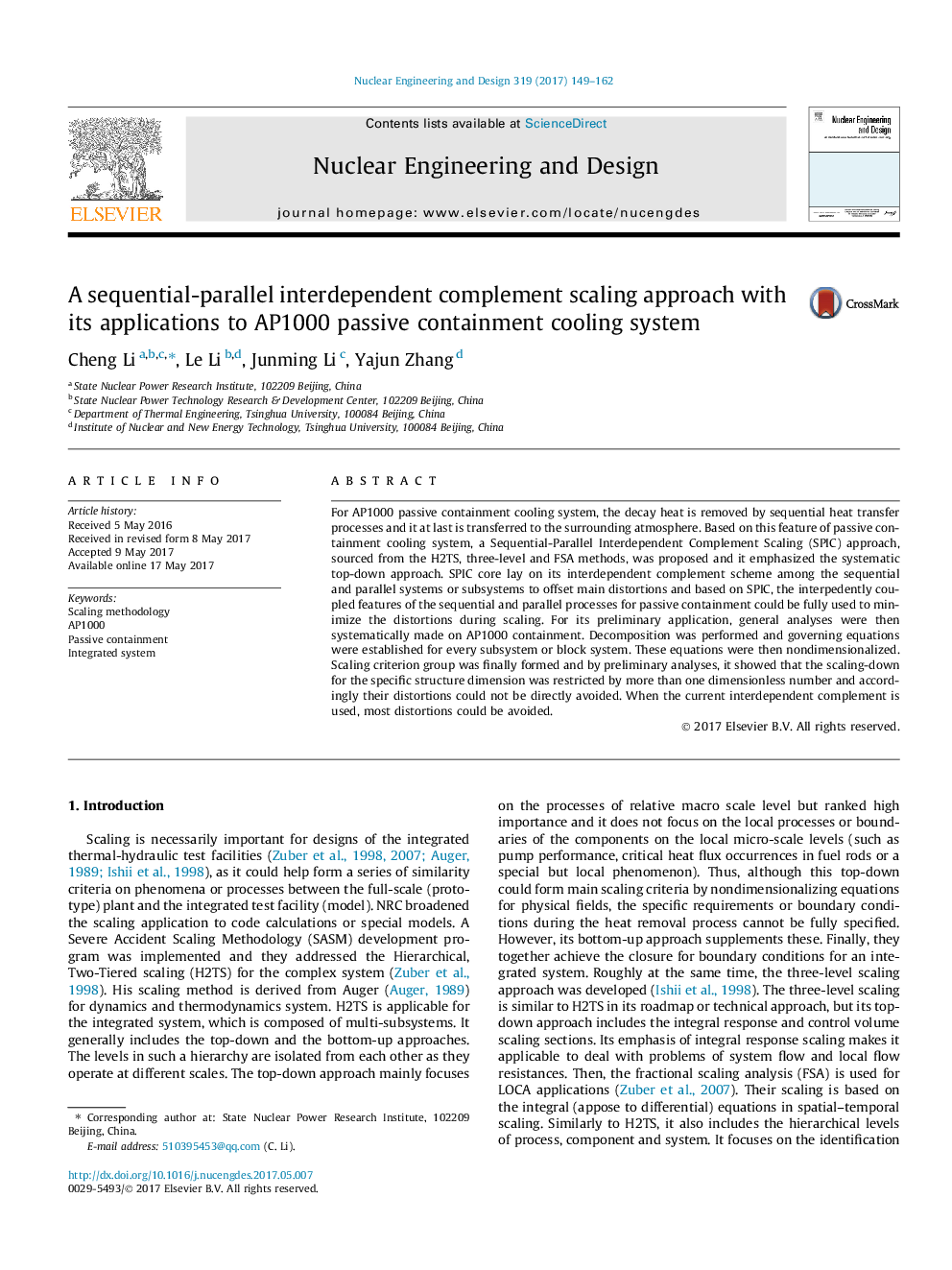| کد مقاله | کد نشریه | سال انتشار | مقاله انگلیسی | نسخه تمام متن |
|---|---|---|---|---|
| 4925509 | 1431402 | 2017 | 14 صفحه PDF | دانلود رایگان |
عنوان انگلیسی مقاله ISI
A sequential-parallel interdependent complement scaling approach with its applications to AP1000 passive containment cooling system
دانلود مقاله + سفارش ترجمه
دانلود مقاله ISI انگلیسی
رایگان برای ایرانیان
کلمات کلیدی
موضوعات مرتبط
مهندسی و علوم پایه
مهندسی انرژی
مهندسی انرژی و فناوری های برق
پیش نمایش صفحه اول مقاله

چکیده انگلیسی
For AP1000 passive containment cooling system, the decay heat is removed by sequential heat transfer processes and it at last is transferred to the surrounding atmosphere. Based on this feature of passive containment cooling system, a Sequential-Parallel Interdependent Complement Scaling (SPIC) approach, sourced from the H2TS, three-level and FSA methods, was proposed and it emphasized the systematic top-down approach. SPIC core lay on its interdependent complement scheme among the sequential and parallel systems or subsystems to offset main distortions and based on SPIC, the interpedently coupled features of the sequential and parallel processes for passive containment could be fully used to minimize the distortions during scaling. For its preliminary application, general analyses were then systematically made on AP1000 containment. Decomposition was performed and governing equations were established for every subsystem or block system. These equations were then nondimensionalized. Scaling criterion group was finally formed and by preliminary analyses, it showed that the scaling-down for the specific structure dimension was restricted by more than one dimensionless number and accordingly their distortions could not be directly avoided. When the current interdependent complement is used, most distortions could be avoided.
ناشر
Database: Elsevier - ScienceDirect (ساینس دایرکت)
Journal: Nuclear Engineering and Design - Volume 319, 1 August 2017, Pages 149-162
Journal: Nuclear Engineering and Design - Volume 319, 1 August 2017, Pages 149-162
نویسندگان
Cheng Li, Le Li, Junming Li, Yajun Zhang,